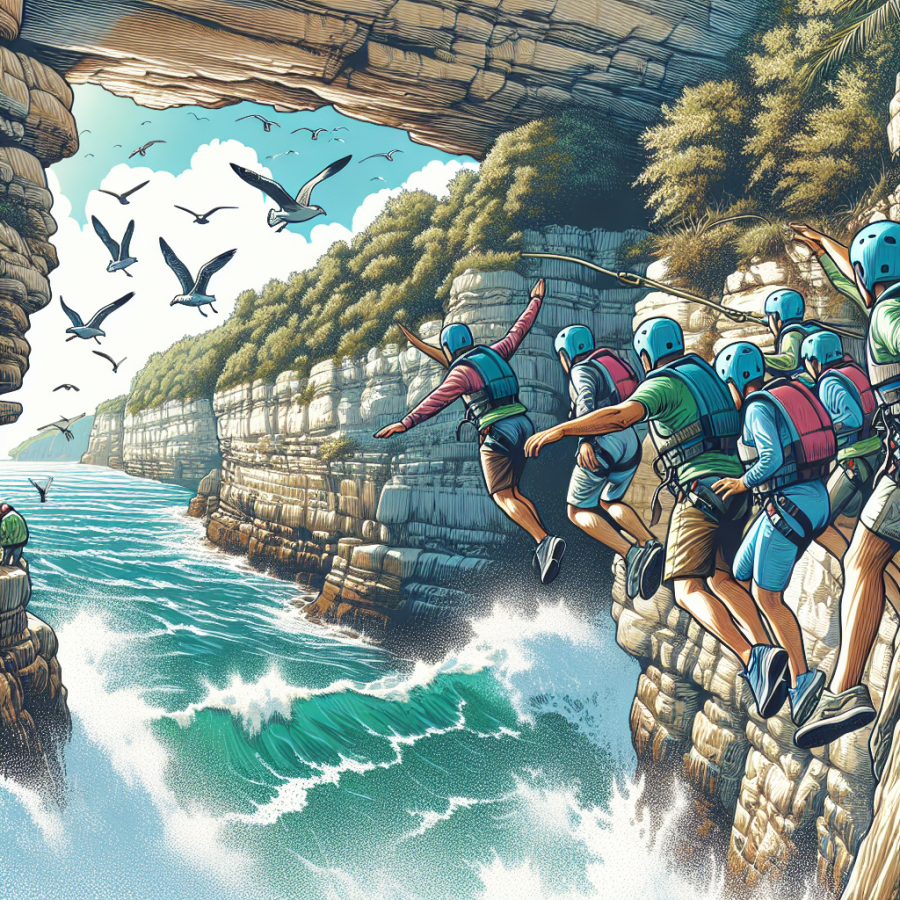Embracing the Elements: Safety and Gear Essentials for Coasteering Enthusiasts
In the realm of coastal exploration, coasteering is a unique blend of swimming, climbing, and cliff jumping—it is a pursuit for the adventurous spirit seeking to embrace the rugged beauty of the seaside. But with such an adrenaline-fueled activity comes the necessity of prioritizing safety and ensuring that all enthusiasts are well-equipped to handle the challenges they may encounter in the diverse coastal environment.
Safety should always be at the forefront of any coasteering excursion. The dynamic nature of the coastline, with its waves, tides, and rocky landscapes, requires a respectful and knowledgeable approach. Participants must be aware of tide times and sea conditions, which can change rapidly, potentially leading to dangerous situations. A thorough briefing before each trip is essential to cover the risks, safety procedures, and emergency signals. It is also crucial to never coasteer alone; a minimum of three people is recommended so that in the event of an injury, one person can stay with the injured individual while another seeks help.
Additionally, hiring a professional guide who knows the local area can be invaluable. Guides provide insights into the hidden dangers and challenges specific to each location, can teach proper techniques, and lead the way, ensuring a safer and more enjoyable experience.
When it comes to gear, the right equipment is just as important as knowledge and preparation. A well-fitting, durable wetsuit is essential for thermal protection and buoyancy, as water temperatures can be low even in the summer months and coasteering often involves extended periods in the water. Wetsuits also provide a layer of protection against scrapes and abrasions from rocks.
A key piece of safety equipment for coasteering is a safety helmet. This piece of gear protects against head injuries from falls or from being struck by floating debris. Helmets designed for water sports are the best choice, as they provide the necessary impact protection while also allowing water to drain.
Footwear is another critical element of coasteering gear. Sturdy, grip-oriented water shoes or boots are necessary to navigate the slippery and uneven surfaces encountered on the coast. These should fit snugly and provide ankle support to minimize the risk of injury.
Buoyancy aids are recommended to help swimmers stay afloat during the swimming portions of coasteering. They provide an extra level of safety, especially for those who are less confident in the water. Make sure the buoyancy aid fits properly and does not restrict movement.
Read also:
Understanding the Intricacies: How Golf Handicaps Work
Navigating the Swells: Mastering the Art of Coasteering
Navigating the swells is an essential skill in the realm of coasteering, an exhilarating activity that blends rock scrambling, cliff jumping, and swimming along a rugged coastline. Mastering the art of coasteering isn't just about seeking thrills; it's about reading the environment, understanding the ocean's power, and respecting your own limits as you tackle the natural obstacle course that the coast presents.
To navigate the swells successfully, enthusiasts must first learn to interpret the sea. This means recognizing patterns in wave behavior, spotting the channels where the water flows more calmly, and identifying the sequences that could indicate an oncoming set of larger waves. Knowledge of tide timings and the impact of weather conditions on sea state is paramount. Adventurers should always check local tide charts and weather forecasts before setting out to avoid being caught off guard by rising tides or rough seas.
In coasteering, timing is everything. Jumping into the water requires not just courage but also excellent timing to match the rhythm of the ocean. You generally want to enter the water as a swell passes, diving into the trough rather than the crest to minimize impact and avoid being thrown against rocks. Novices should always coasteer with experienced guides who can demonstrate the correct techniques and timing.
Once you're in the water, dealing with incoming swells demands a combination of swimming skills and ocean knowledge. It's important to stay relaxed, conserving energy as you swim through calmer water and making use of the lift provided by the swells when advantageous. The key is to not fight against the power of the ocean but to work with it, using its currents and rhythms to aid your progression along the coast.
The practice of 'threading the needle,' or navigating through tight passages between rocks, is a thrilling component of coasteering. This requires calm, careful maneuvering as the ocean swells surge through these gaps, offering a natural propulsion system. Coasteerers must also be adept at climbing and scrambling over rocky outcrops, constantly assessing handholds and footholds, and being prepared to adapt their route as conditions change.
Safety is a priority when navigating the swells. A well-fitted buoyancy aid, helmet, and appropriate footwear are non-negotiable basics for any coasteering excursion. These pieces of equipment are vital for protection against the inevitable knocks and scrapes from the rocks, as well as keeping adventurers afloat in the water.




